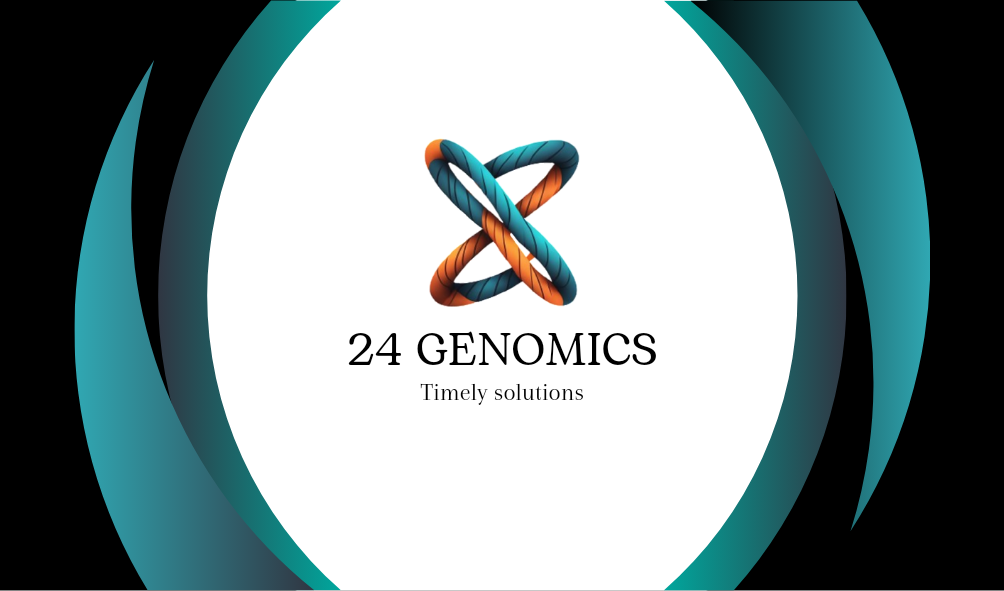In recent times, a greatest spike in the cases of depression was recorded in the year 2020. A meta-analysis published in 2021 estimated that the global prevalence of depression increased by 27.6% in 2020 compared to pre-pandemic levels. This was due to the Covid-19 pandemic. The pandemic led to various stress factors such as social isolation, financial hardship, fear of illness and the daily disruption of routines. Some pre-pandemic prevalence studies have also found that between 42% to 46% of Kenyan youth endorsed clinically elevated depression. These are shocking numbers that call for urgent intervention.Pharmacogenomic interventions could be a key tool in developing pharmacological treatment for Major Depressive Disorder. A number of pharmacokinetic approaches have been cited in relation to Major Depressive Disorder.
In recent years, cases of Major Depressive Disorder have been on the rise, with an estimated increase of 18% on the population living with depression between 2005 and 2015 according to the World Health Organisation (WHO). This number is expected to experience a steady rise given the factors that the general public is pre-disposed to such as unhealthy diets, poverty, inadequate sleep and inflation in most economies. For most people, the major stressors are socio-economic factors and thus those very factors are what cause them to experience depression.
These include:
Two genes involved in drug metabolism – CYP2C19 and CYP2D9
The CYP2C19 gene encodes an enzyme that is involved in the metabolism of various antidepressant medications, including serotonin reuptake inhibitors(SSRIs) like citalopram, escitalopram and sertraline.In addition to that, CYP2D9 is involved in the metabolism of tricyclic antidepressants(TCAs), and serotonin-norepinephrine reuptake inhibitors(SNRIs).Genetic variations in the CYP2D9 gene can result in different genetic phenotypes; such as poor, intermediate, extensive, and ultra-rapid metabolizers.
Serotonergic genes- 5HT receptors
As mentioned above, some antidepressants eg. Serotonin-reuptake inhibitors(SSRIs) work by modulating the serotonergic system, primarily by increasing the availability of serotonin in the synaptic cleft. The effects of the aforementioned antidepressants are mediated through their interactions with different 5HT receptor subtypes(5-HT1A, 5-HT1B, 5HT2A, 5-HT2C), which can lead to downstream changes in neurotransmission, neuroplasticity, and mood regulation.Pharmacogenomic testing for 5-HT receptor gene polymorphism allows for the selection of the most appropriate antidepressant medication to and optimise the dosage for individual patients.
Corticotropin releasing hormone
CRH is a key regulator of the hypothalamic-pituitary-adrenal (HPA) axis, which is a central part of the stress response system.Dysregulation of the HPA axis, including altered CRH secretion, has been consistently observed in individuals with MDD.Elevated CRH levels and hyperactivity of the HPA axis have been linked to the development and maintenance of depressive symptoms.Based on the understanding of CRH’s role in the pathogenesis of MDD, researchers have explored the development of pharmacological agents that target the CRH system as a potential treatment for depression.One approach has been the development of CRH receptor antagonists, which aim to block the effects of CRH and normalize the HPA axis function.Several CRH receptor antagonists, such as antalarmin, CP-154,526, and R121919, have been investigated in clinical trials for the treatment of MDD.These agents have shown some promising results in reducing depressive symptoms, particularly in patients with increased HPA axis activity.The understanding of the CRH system’s involvement in MDD has also led to the exploration of combination therapies, where CRH receptor antagonists are used in conjunction with traditional antidepressants.The rationale is that targeting the HPA axis dysregulation while also modulating other neurotransmitter systems (e.g., serotonin, norepinephrine) may lead to enhanced therapeutic effects.The study of CRH has also contributed to the identification of potential biomarkers for MDD, such as elevated CRH levels or altered HPA axis function.These biomarkers can help in the early detection of MDD, guide treatment selection, and monitor the response to therapeutic interventions.Understanding the role of the CRH system in MDD has enabled the development of more personalised treatment approaches.Patients with specific CRH-related biomarker profiles may be more likely to respond to CRH-targeted therapies, allowing for more tailored pharmacological interventions.
What is the prevalence of Major Depressive Disorder in Kenya?
World Health Organization (WHO)-based studies indicate that the prevalence of psychiatric disorders previously seen in adult life has increased enormously among children and youths in the past few years. Four percent of 12- to 17-year olds and 9% of 18- to 24-year olds have been shown to suffer from major depressive disorder (MDD). These WHO studies also indicate that depression is the most prevalent disorder worldwide with wide reaching consequences in youths. Further, it has been shown that some forms of parenting styles are associated with child abuse.The prevalence of clinically depressive symptoms in Kenya is 43.7% among youths in public schools in Nairobi province, while the prevalence of those attending general health facilities is 41.3%.
~ For Citation; https://www.ncbi.nlm.nih.gov/pmc/articles/PMC3660220/#:~:text=The%20prevalence%20of%20clinically%20depressive,Khasakhala%20et%20al
What is the prevalence of Major Depressive Disorder in Africa?
The burden of depressive disorders varies by WHO regions, ranging from 2.6% in males located within the Pacific to 5.9% in females located within Africa. In addition, prevalence rates also vary by age, peaking in older adulthood (55 – 74 years) with a 7.5% rate among females and 5.5% among males (Kessler, 2007, Depression and Other Common Mental Disorders Global Health Estimates, 2017).In Africa, about 29.19 million people (9% of 322 million) suffer from depression, with over 7 million in Nigeria (3.9% of 322 million). Estimates place the lifetime prevalence of depressive disorders from 3.3% to 9.8% (Esan and Esan, 2016).
In which age-brackets is Major Depressive Disorder prevalent globally?
In 2020, approximately 12% of US adolescents ages 12 to 17 had a depressive episode severe enough to cause significant impairment. Depression is less common in children under 12 at 1.7%. In up to 60% of adolescents with depression, the prominent feature is a significant decline in functioning with school or work, chores, and social interactions. Depression may also present as chronic irritability, anger, or negative acting out. Children and adolescents with depression may be susceptible to social rejection, which may negatively affect social development.The average age of onset for major depressive disorder is between 35 and 40 years of age. Onset in early adulthood may be linked with more depressive episodes, a longer duration of illness, and therefore a more difficult clinical course. In middle adulthood, depression was related to life satisfaction and levels of functional disability.Women are more likely to experience depression, typically expressing sadness, worthlessness, and guilt. Men often have more somatic symptoms, including sleep problems, fatigue, and irritability. For young adults, low self-esteem is a predictor of depression. And in middle adulthood, mobility and difficulty with household activities may predict more severe depression coursesApproximately 2.6% of older adults have a depressive disorder. While aging and depression do not necessarily occur together, the natural decline in functioning that comes with older age can put independent living at risk. Also, older adults are more likely to grieve the loss of friends, family members, and spouses. The mortality rate for older adults with depression is higher than for those reporting higher life satisfaction.
How is Major Depressive Disorder Treated?
Medications and psychotherapy are effective for most people with depression.Some of the Medications include:Selective serotonin reuptake inhibitors (SSRIs). Doctors often start by prescribing an SSRI. These drugs are considered safer and generally cause fewer bothersome side effects than other types of antidepressants. SSRIs include citalopram (Celexa), escitalopram (Lexapro), fluoxetine (Prozac), paroxetine (Paxil, Pexeva), sertraline (Zoloft) and vilazodone (Viibryd).
Serotonin-norepinephrine reuptake inhibitors (SNRIs). Examples of SNRIs include duloxetine (Cymbalta), venlafaxine (Effexor XR), desvenlafaxine (Pristiq, Khedezla) and levomilnacipran (Fetzima).
Atypical antidepressants. These medications don’t fit neatly into any of the other antidepressant categories. They include bupropion (Wellbutrin XL, Wellbutrin SR, Aplenzin, Forfivo XL), mirtazapine (Remeron), nefazodone, trazodone and vortioxetine (Trintellix).
Tricyclic antidepressants. These drugs — such as imipramine (Tofranil), nortriptyline (Pamelor), amitriptyline, doxepin, trimipramine (Surmontil), desipramine (Norpramin) and protriptyline (Vivactil) — can be very effective, but tend to cause more-severe side effects than newer antidepressants. So tricyclics generally aren’t prescribed unless you’ve tried an SSRI first without improvement.
Monoamine oxidase inhibitors (MAOIs). MAOIs — such as tranylcypromine (Parnate), phenelzine (Nardil) and isocarboxazid (Marplan) — may be prescribed, typically when other drugs haven’t worked, because they can have serious side effects. Using MAOIs requires a strict diet because of dangerous (or even deadly) interactions with foods — such as certain cheeses, pickles and wines — and some medications and herbal supplements. Selegiline (Emsam), a newer MAOI that sticks on the skin as a patch, may cause fewer side effects than other MAOIs do. These medications can’t be combined with SSRIs.Other medications. Other medications may be added to an antidepressant to enhance antidepressant effects. Your doctor may recommend combining two antidepressants or adding medications such as mood stabilizers or antipsychotics. Anti-anxiety and stimulant medications also may be added for short-term use.
~ForCitation: https://www.mayoclinic.org/diseases-conditions/depression/diagnosis-treatment/drc-20356013
In Conclusion;
Although pharmcogenenomic approaches have shown great potential in dealing with Major Depressive Disorder, consistent results are yet to be realised and it’s true cost-effectiveness remains unclear.We at 24 genomics aim to look into this gap and find away to find a realistic and lasting solution based on past research conducted and our own research.


Leave a Reply